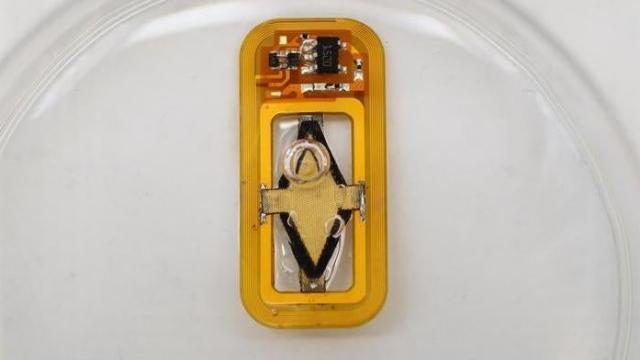MIT scientists might be one step closer to making insulin injections a thing of the past. In a new study this week, they’ve shown that it’s possible to implant a medical device inside mice that produces its own supply of insulin for up to a month. More research will be needed before this technology would be widely available to use in humans, however.
Insulin is a hormone with several roles in the body, but its main function is to help move glucose from the bloodstream to our cells so they can use it for energy (the glucose comes from digesting carbohydrates). When this process goes awry, it can lead to chronically high blood sugar and the development of diabetes. People with type 1 diabetes have an overzealous immune system that attacks the pancreatic islet cells responsible for making insulin, while people with type 2 diabetes develop a resistance to insulin’s effects.
Those with type 1 diabetes (and eventually, many people with type 2) are no longer able to produce enough insulin and require regular injections of it to keep their blood sugar in check. The invention of injectable insulin has stopped diabetes from being a death sentence. However, diabetics still experience a greater risk of many health complications and shorter life expectancy, especially if they have a harder time controlling their blood sugar. As a result, scientists are still looking for ways to improve how insulin can be provided to people.
One promising field of research is islet cell transplantation, which aims to use islet cells from a suitable donor to restore the natural production of insulin. Currently, however, this experimental procedure requires people to take lifelong immune-suppressing drugs to prevent their bodies from rejecting the donor cells. Researchers at MIT are working on a slightly different approach to the concept. They theorize that you can house these donated cells in a small device that’s then implanted just underneath the skin. The device would protect the cells from the immune system, while still allowing them to produce insulin on a timely basis.
In this new study, set to be published this week in the journal PNAS, the researchers seem to have solved a known issue with these sorts of devices: the need for a reliable oxygen supply to ensure the survival of the donor islet cells. Other devices have used separate chambers or a chemical mixture to provide oxygen to the cells, but these methods require upkeep and refuelling. The team’s device instead features a membrane that creates oxygen by splitting apart nearby water molecules—in theory allowing for an indefinite supply of oxygen. The device can also be powered wirelessly with a small amount of voltage, which might only require a small patch to be worn on the skin.
In the team’s lab experiments, diabetic mice implanted with the oxygen-supplying device had sustained healthy blood sugar levels for at least a month, whereas mice given a device without the ability to produce oxygen developed high blood sugar within two weeks time. The device did induce a build-up of scar tissue around it, which is a common immune response to implanted devices. But the results suggest that this scarring didn’t drastically reduce its overall functioning.
“You can think of this as a living medical device that is made from human cells that secrete insulin, along with an electronic life support-system. We’re excited by the progress so far, and we really are optimistic that this technology could end up helping patients,” said senior study author Daniel Anderson, a professor in MIT’s Department of Chemical Engineering, in a statement from the university.
While this research is still early, the team envisions that it could eventually be used for other medical conditions dependent on a regular supply of externally produced proteins, such as certain forms of anemia treated with erythropoietin. For now, the team is next hoping to test out their device in larger animals before they move on to humans. They also plan to see if their device can safely and effectively stay inside the body for even longer periods of time.
“We’re optimistic that it will be possible to make living medical devices that can reside in the body and produce drugs as needed,” Anderson said.
